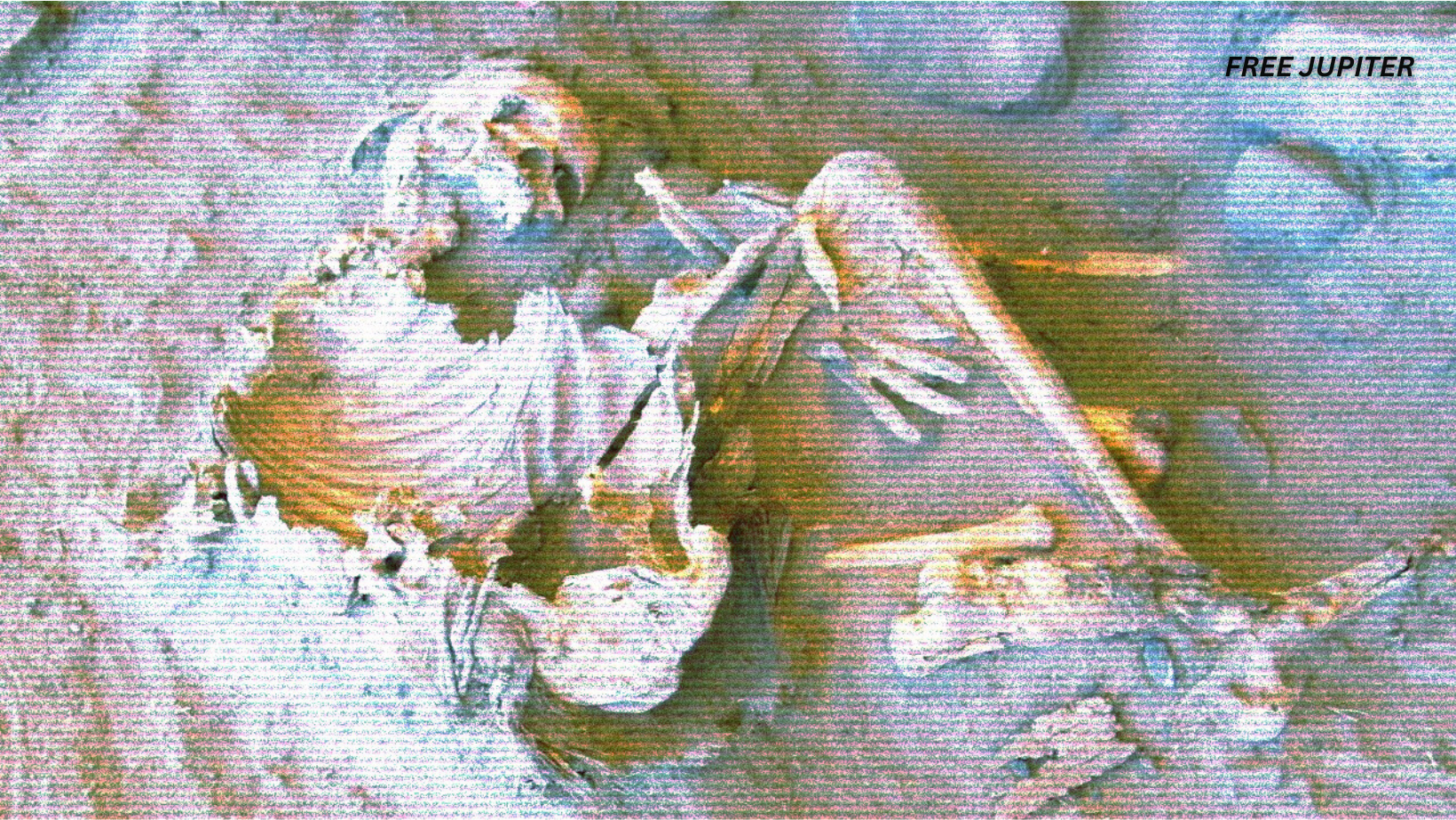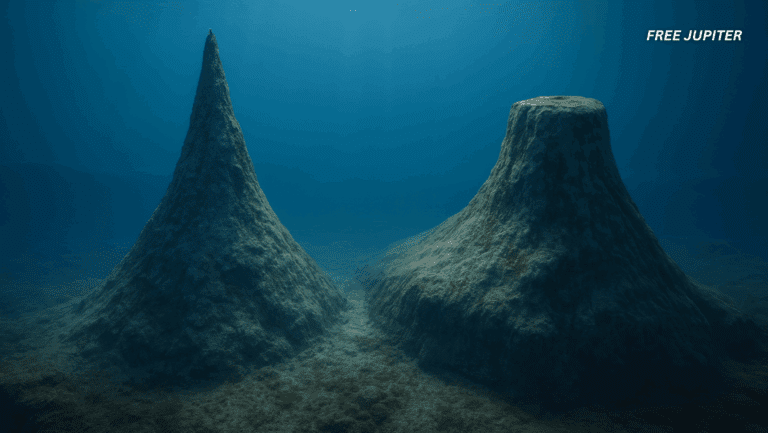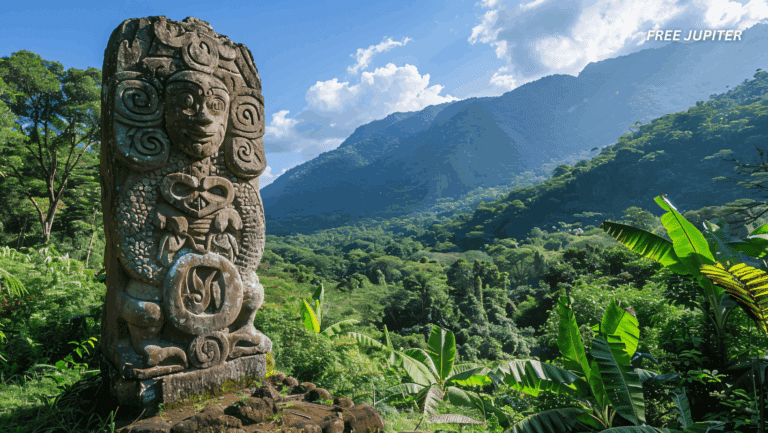Friendly Note: FreeJupiter.com shares general info for curious minds 🌟 Please fact-check all claims—and always check health matters with a professional 💙
Today, the Sahara Desert stands as one of the most inhospitable and unforgiving regions on Earth—a barren sea of scorching sand and stone where life ekes out a fragile existence. Yet, in a distant epoch long past, this immense desert once flourished with greenery, teemed with lakes and wetlands, and provided sanctuary to early human populations. It was during the African Humid Period, spanning roughly from 14,800 to 5,500 years ago, that the Sahara was transformed into a vibrant savannah, capable of sustaining human life, agriculture, and pastoralism.
The Discovery at Takarkori Rock Shelter
Amid this ancient, verdant landscape, a population of Neolithic people lived and thrived in what is now the southwestern region of Libya. Their remains, remarkably preserved by the desert’s arid climate, have been the subject of intense scientific scrutiny. Two such individuals, mummified female herders discovered at the Takarkori rock shelter, have become central to a groundbreaking genetic study that is reshaping the way we understand human evolution and migration in North Africa.
Extracting Ancient DNA From the Desert
Led by archaeogeneticist Nada Salem of the Max Planck Institute for Evolutionary Anthropology, a team of international researchers undertook a delicate and highly technical analysis of the fragmented DNA recovered from these mummified remains. Despite the severe degradation of genetic material typically associated with arid regions, enough viable DNA was extracted to offer an extraordinary glimpse into the genetic identity of these ancient individuals.
Read more: Beautiful Relics From Ancient Egypt Were Found In Hidden Chamber Down A 14-Meter Shaft
A Previously Unknown Human Lineage
What the team uncovered was wholly unexpected.
According to the findings published in the journal Nature, the mummies from Takarkori possess a genetic profile that does not align with any known modern human populations. Their DNA does not trace back to Sub-Saharan African groups, as might have been assumed given their geographical proximity. Nor does it match the genetic patterns of contemporary North African peoples. Instead, the Takarkori individuals appear to belong to a long-isolated and previously unidentified North African genetic lineage, one that diverged from Sub-Saharan African populations at the same time that modern humans outside of Africa began to branch off.
Mysterious Links to Taforalt Cave Foragers
Even more intriguing is the discovery that the Takarkori individuals share a closer genetic relationship with ancient foragers from Taforalt Cave in Morocco—humans who lived approximately 15,000 years ago. These Taforalt people, among the earliest known inhabitants of North Africa, are similarly distant in genetic terms from Sub-Saharan populations. This suggests that the Sahara, during its green phase, may have acted as a barrier rather than a bridge between the northern and southern halves of the African continent.
The Neanderthal Puzzle
Further adding to the mystery is the Neanderthal connection.
While the Taforalt individuals were found to possess about half the amount of Neanderthal DNA compared to non-African modern humans—a result consistent with what might be expected given their proximity to Eurasia—the Takarkori individuals had even less Neanderthal DNA. In fact, their genomes contained ten times less Neanderthal material than the Taforalt people, and yet still more than was found in other sub-Saharan African groups from the same period. This nuanced gradient of Neanderthal ancestry raises questions about the nature and timeline of ancient human interactions with Neanderthals, particularly in North Africa.
Minimal Contact With Early Farmers
The Takarkori population also displayed faint traces of genetic admixture from early farming communities in the Levant, suggesting that some limited contact may have occurred with Neolithic agriculturalists to the east. However, these interactions appear to have been minimal and did not significantly alter the distinct genetic identity of the Takarkori people.
Read more: The Chilling Story of the First Humans to Be Cryonically Preserved
Cultural Diffusion Over Migration
One of the most profound implications of the study lies in what it reveals about the spread of farming and herding practices across North Africa. The prevailing theory had long held that agriculture spread through human migration—that is, people moved into new areas, bringing their domesticated crops and animals with them. However, the Takarkori DNA tells a different story. Rather than being the result of widespread genetic mixing, the spread of pastoralism in this region appears to have been driven primarily by cultural diffusion.
In other words, the knowledge and techniques of animal herding and possibly early farming seem to have been passed from one group to another without significant interbreeding. The Takarkori people, whose ancestry predates the advent of agriculture, likely adopted pastoralism from neighboring groups while maintaining their genetic distinctiveness.
Innovative Foragers in an Isolated Land
The ancestors of the Takarkori mummies—prehistoric hunter-gatherers who roamed North Africa thousands of years before the Sahara became a desert—appear to have been remarkably innovative. Archaeological evidence from the region points to their use of sophisticated pottery, basketry, and tools crafted from wood and bone. Despite being classified as foragers, these early humans exhibited traits commonly associated with more sedentary lifestyles. They remained in certain locations for extended periods, indicating a shift away from purely nomadic patterns and hinting at an early form of community settlement.
Natural Barriers to Genetic Exchange
The reason this population remained so genetically distinct may be tied to the remarkable ecological diversity that once characterized the Green Sahara. During the African Humid Period, the region featured an astonishing array of habitats—including open grasslands, dense woodlands, freshwater lakes, marshlands, and even mountain ranges. These varied environments likely acted as natural barriers, restricting movement and interaction between human groups and thereby preserving unique genetic lineages like that of the Takarkori people.
Echoes of the Past in the Shifting Sands
As the African Humid Period gradually came to an end and the climate shifted toward aridity once more, the Sahara underwent a dramatic transformation. Lakes dried up, grasslands withered, and once-flourishing communities were either forced to migrate or vanished into the sands of time. The Takarkori and others like them disappeared, leaving behind only traces—tools, pottery shards, and, on rare occasions, the well-preserved remains of their dead.
Read more:Archaeologists Find an Ancient Temple Hidden in the Heart of a Cliff
Rewriting the Story of Ancient North Africa
With each new discovery, such as the Takarkori mummies, a richer and more complex picture of prehistoric North Africa comes into focus. The Sahara, once believed to be a harsh divider between the north and south of the continent, is increasingly seen as a dynamic and multifaceted region that played host to an incredible variety of human cultures—some of which have no surviving descendants today.
The findings from this study underscore the importance of genetic research in archaeology, particularly in regions where traditional archaeological methods may be hampered by extreme climates or lack of surviving organic material. They also highlight the critical role that ancient DNA analysis can play in reshaping our understanding of human ancestry, migration, and cultural development.
Unwritten Stories Waiting Beneath the Dunes
And so, buried deep beneath the windswept dunes of the modern Sahara, more secrets undoubtedly await discovery—perhaps more mummies, more tools, or even entire settlements—each capable of shedding further light on the lives of those who once called this lush, forgotten land their home.
The Sahara may seem empty now, but it once was a cradle of life, culture, and mystery. And with each grain of sand that is shifted by science, another piece of humanity’s vast and intricate puzzle is revealed.










